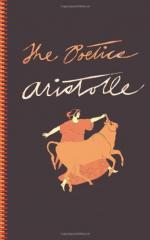|
This section contains 18,134 words (approx. 61 pages at 300 words per page) |

|
SOURCE: "Aristotle's Aesthetics 1: Art and Its Pleasure," in Aristotle's "Poetics," Duckworth, 1986, pp. 42-81.
In the following essay, Halliwell examines Aristotle's conceptualization of "mimetic arts" and argues that the pleasure which results from experiencing a work of mimetic art is "a response to the intelligible structure imposed on his material by the artist's rational capacity."
There is evidence to be found in the Poetics, and it receives some confirmation from material elsewhere in the corpus, that Aristotle's thoughts on poetry were not formed in isolation from comparative reflections on other related activities, especially the visual arts, music and dancing—activities which it is now automatic for us to describe collectively as art'. For Aristotle the most significant common factor shared by these activites, and their products, was mimesis, and it is directly in connection with mimesis that we encounter in the Poetics and occasionally in other works general pronouncements...
|
This section contains 18,134 words (approx. 61 pages at 300 words per page) |

|


